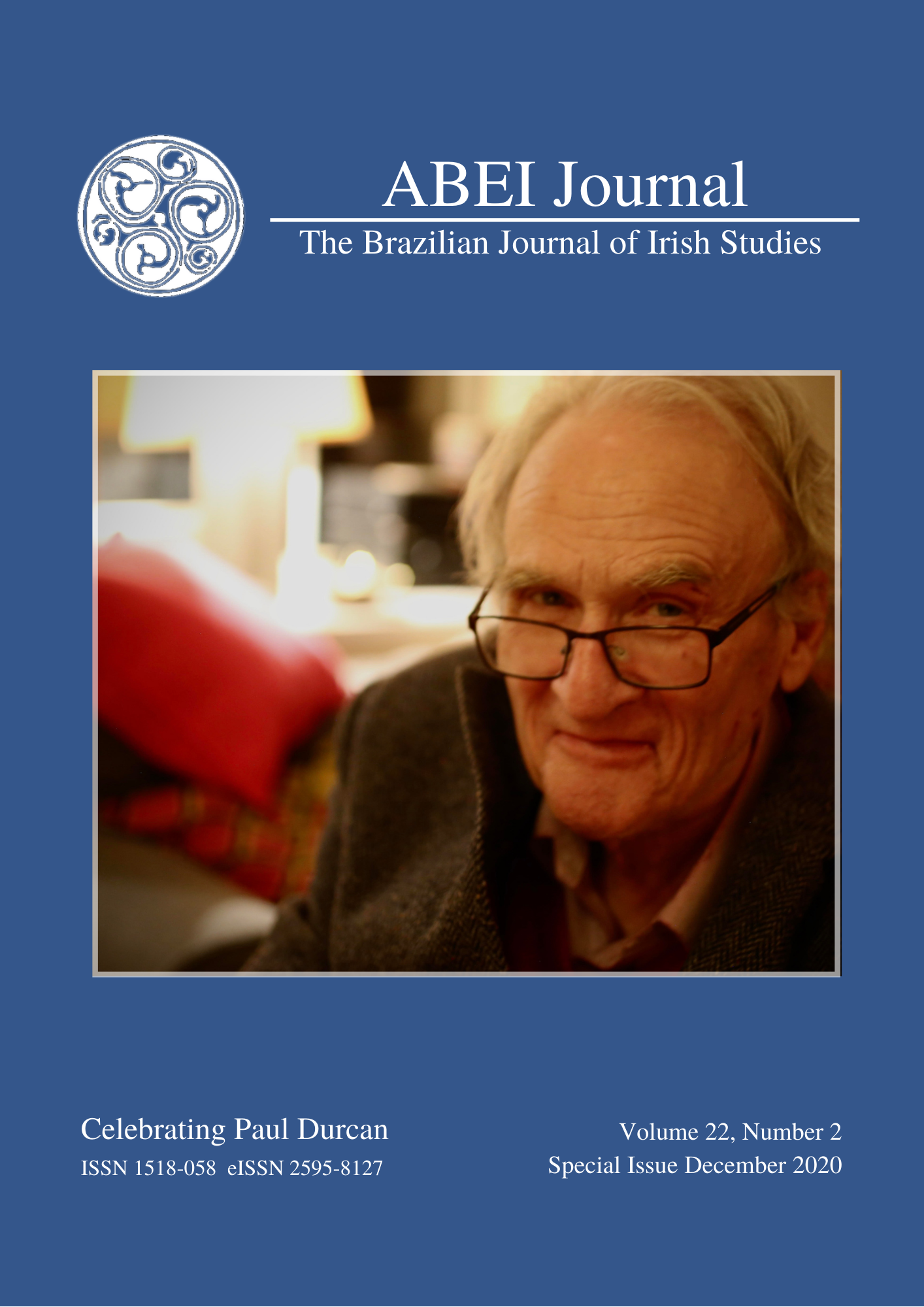On Paul Durcan and the Visual Arts: Gender, Genre, Medium
DOI:
https://doi.org/10.37389/abei.v22i2.180776Keywords:
Visual arts, Transgression, Gender, MediumAbstract
The poetry of Paul Durcan finds one of its major attractions in its acknowledgement and crossing of boundaries. Such borderlines are of various types: they are semiotic and intermedial, involving Paul Durcan’s deployment of verbal resources to co-opt or challenge representations in other systems of signification – especially visual media; they are cultural and political, concerning the poet’s processing of elements from both Irish and global cultures; and they are those proper to gendered identities, highlighting the positions of men and women as both subjects and objects of a variety of inscriptions. This essay approaches Durcan’s (literally) transgressive writing and the intellectual and disciplinary challenges it poses by questioning our ability to read poems and pictures, and accept the ostensible self-containment of political conformations and modes of identity.
References
Collins, Lucy. ‘‘Performance and dissent: Irish poets in the public sphere’’, Matthew Campbell (ed.), The Cambridge Companion to Contemporary Irish Poetry. Cambridge: C.U.P., 2003, pp. 209-28.
Dunning, William V. Changing Images of Pictorial Space: A History of Spatial Illusion in Painting. New York: Syracuse University Press, 1991.
Durcan, Paul. Jesus Break His Fall. Dublin: Raven Arts, 1980.
Durcan, Paul. Jumping the Train Tracks with Angela. Dublin: Raven Arts / Manchester: Carcanet, 1983.
Durcan, Paul. The Berlin Wall Café. Belfast: Blackstaff, 1985.
Durcan, Paul. Daddy, Daddy. Belfast: Blackstaff, 1990.
Durcan, Paul. Crazy About Women. Dublin: The National Gallery of Ireland, 1991.
Durcan, Paul. Give Me Your Hand. London: Macmillan / National Gallery, 1994.
Durcan, Paul. Praise in Which I Live and Move and Have My Being. London: Harvill Secker, 2012.
Durcan, Paul. The Days of Surprise. London: Harvill Secker, 2015.
Heffernan, James A.W. Cultivating Picturacy. Waco, Tex: Baylor U.P., 2006.
Durcan, Paul. Museum of Words: the poetics of ekphrasis from Homer to Ashbery. Chicago, Ill.: Univ. of Chicago Press, 1993.
Homem, Rui Carvalho. ‘“Private Relations”: Selves, Poems and Paintings – Durcan to Morrissey’, Fran Brearton and Alan Gillis (eds.), Oxford Handbook of Modern Irish Poetry. Oxford: O.U.P., 2012, pp. 282-96.
Jakobson, Roman. ‘‘On Linguistic Aspects of Translation’’ (1959). Lawrence Venuti (ed.), The Translation Studies Reader. 3rd edition. Routledge, 2012, pp.126-31.
Longley, Edna. The Living Stream: Literature and Revisionism in Ireland. Belfast: Bloodaxe, 1994.
Louvel, Liliane. Texte / Image: Images à Lire, Textes à Voir. Presses Universitaires de Rennes, 2002.
Mitchell, W.J.T. Iconology: Image, Text, Ideology. The Univ of Chicago Press, 1986.
Tóibín, Colm (ed.). The Kilfenora Teaboy: A Study of Paul Durcan. Dublin: New Island, 1996.
Downloads
Published
Issue
Section
License
Copyright (c) 2020 Rui Carvalho Homem

This work is licensed under a Creative Commons Attribution-NonCommercial 4.0 International License.


